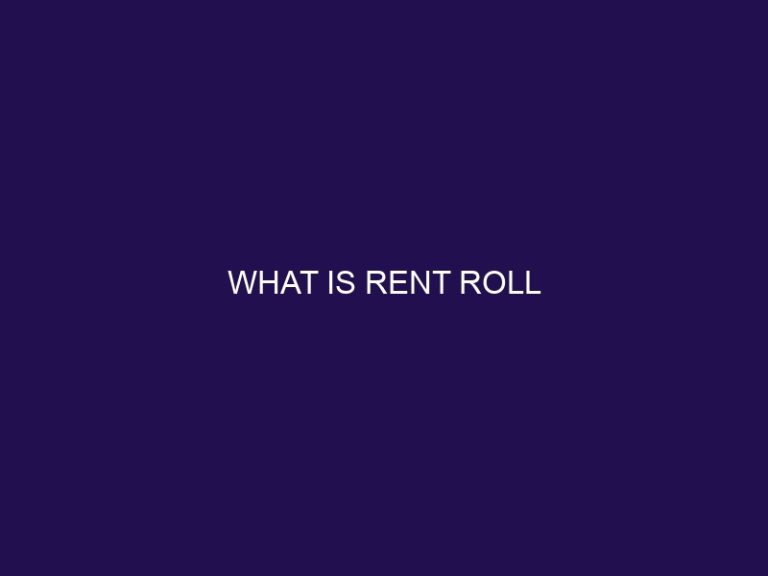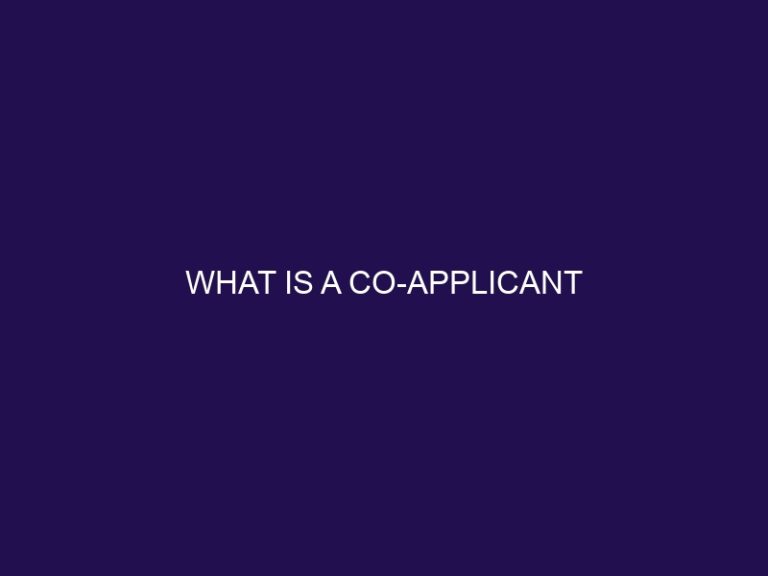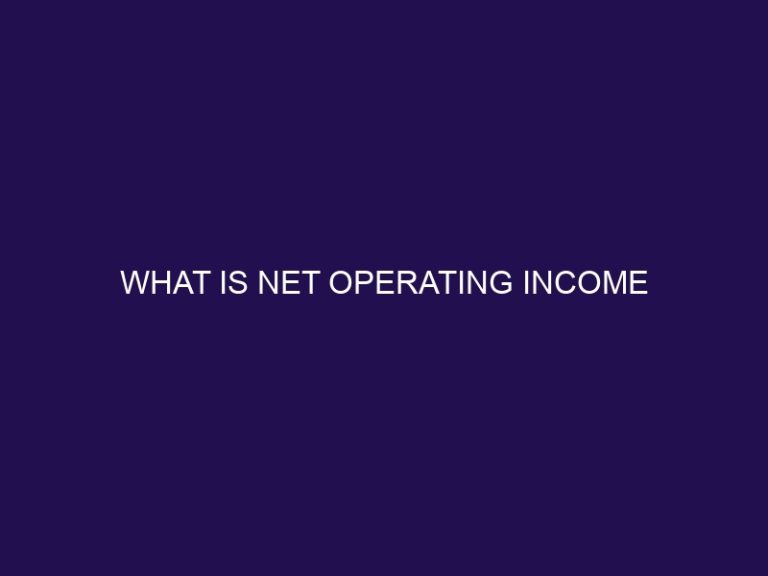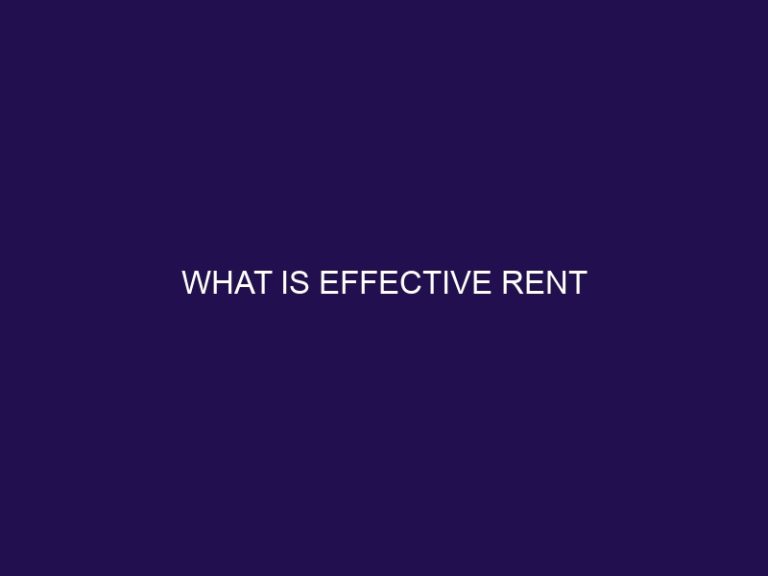What is a Lessee
A lessee is a person or entity who enters into a lease agreement to acquire the use of a property or asset. In this arrangement, the lessee is granted the right to use the property or asset for a specified period in exchange for periodic rental payments. Understanding the concept of a lessee is crucial for both individuals and businesses involved in leasing agreements.
There are different types of leases, each with its own terms and conditions. These include:
1. Operating Lease: This type of lease is usually a short-term arrangement where the lessee uses the asset for a specific period, but the ownership remains with the lessor. It is commonly used for equipment or vehicles.
2. Finance Lease: A finance lease is a long-term agreement where the lessee assumes most of the risks and rewards associated with the ownership of the leased asset. The lessee has the option to purchase the asset at the end of the lease term.
3. Sales and Leaseback: In this arrangement, the lessee sells an asset to the lessor and then leases it back. This allows the lessee to free up capital while still using the asset.
As a lessee, certain rights and responsibilities come with the lease agreement. These include:
1. Payment of Rent: The lessee is obligated to pay the agreed-upon rental payments according to the terms of the lease.
2. Maintenance and Repairs: Depending on the lease terms, the lessee may be responsible for the maintenance and repair of the leased property or asset.
3. Compliance with Lease Terms: The lessee must adhere to the conditions specified in the lease agreement, such as usage restrictions or insurance requirements.
4. Return of Leased Property: At the end of the lease term, the lessee is usually required to return the leased property or asset in good condition, with normal wear and tear expected.
Being a lessee comes with several benefits. These include flexibility, as leasing allows for the use of assets without the long-term commitment and financial investment of ownership. Lessees also have the opportunity for scaled payments, as lease agreements often involve fixed rental amounts. Lessees can access upgraded equipment or assets without the need for significant upfront costs.
However, there are risks and considerations for the lessee as well. Financial liability is a significant concern, as the lessee is responsible for rental payments and may face penalties for defaulting on the lease. Furthermore, the lessee has limited ownership rights over the leased asset, and potential restrictions imposed by the lessor may limit the lessee’s ability to use or modify the property or asset.
Understanding the role of a lessee, the types of leases available, and the associated rights, responsibilities, benefits, risks, and considerations is essential for individuals and businesses engaged in leasing agreements.
Definition of a Lessee
The definition of a lessee, also referred to as a tenant, is an individual or organization that is granted the right to use a property or asset under a lease agreement. The lessee, or tenant, typically pays rent to the lessor, who is the owner of the property. The lease agreement outlines the rights and responsibilities of both parties involved, including the lessee’s obligation to follow the terms of the lease, including payment of rent and properly maintaining the property. It is important for lessees to carefully review and understand the terms of the lease before entering into any agreement. Suggestions for lessees include seeking legal advice, conducting thorough inspections, and negotiating favorable terms.
Types of Leases
Discover the world of leases and explore their various types. Get ready to dive into the realm of operating leases, finance leases, and the unique concept of sales and leaseback. Uncover the distinct features, advantages, and implications that each type brings to the table. Whether you’re seeking flexible terms or long-term ownership, this section has got you covered with all the insights you need to navigate the intricacies of different lease arrangements.
Operating Lease
An operating lease, also known as an operating lease agreement, is a specific type of lease in which the lessee, whether it is a person or a company, does not assume ownership of the property being leased. Instead, the lessee utilizes the property for a predetermined period of time and makes rental payments to the lessor, who is the rightful owner of the property. To gain a better understanding of operating leases, it is crucial to take note of the following key points:
- Flexibility: Operating leases are generally characterized by shorter terms, providing lessees with the convenience of easily upgrading to newer and more advanced equipment or technology.
- Scaled Payments: Rental payments for operating leases are spread out and evenly distributed over the entire lease term, resulting in predictable and manageable expenses for lessees.
- Access to Upgraded Equipment: Through operating leases, lessees are afforded the opportunity to benefit from and utilize the latest equipment without bearing the burden of long-term ownership.
Given these factors, an operating lease presents itself as a highly advantageous option for businesses that prioritize flexibility and require access to updated assets. However, it is vital for lessees to remain cognizant of potential risks, such as limited ownership rights and financial liability, that may arise when entering into an operating lease agreement. Conducting a thorough evaluation of the lease’s terms and conditions is of utmost importance in order to make a well-informed decision.
Finance Lease
A finance lease is a type of lease in which the lessee is responsible for most of the risks and rewards associated with owning the leased asset. Here are some key points to consider about finance leases:
- Ownership: Unlike an operating lease, a finance lease gives the lessee the option to purchase the asset at the end of the lease term.
- Long-term commitment: Finance leases typically have longer terms, allowing the lessee to use the asset for a significant period of time.
- Financial liability: The lessee bears the risk of any maintenance and repair costs associated with the leased asset.
- Fixed payments: The lessee makes regular fixed payments throughout the lease term, which helps with budgeting and cash flow management.
- Access to upgraded equipment: Finance leases provide a pathway for businesses to acquire high-value assets without significant upfront costs.
A growing technology company needed to upgrade its server infrastructure but didn’t have the capital to make an outright purchase. They opted for a finance lease, allowing them to obtain the latest servers for a fixed monthly payment. This enabled the company to stay competitive without straining their finances.
Sales and Leaseback
-
A sales and leaseback, also known as a sales and leaseback transaction, is a financial arrangement where a company sells an asset, such as property or equipment, to a buyer and then leases it back from them.
-
In this process, the company identifies an asset that they want to sell and leaseback.
-
Next, they find a buyer who is willing to purchase the asset.
-
After finding a buyer, the company completes the sale, receiving a lump sum of cash from the transaction.
-
Following the sale, they enter into a lease agreement with the buyer, which enables them to continue using the asset while making regular lease payments.
-
The terms of the lease, including the lease payments and duration, are negotiated between both parties involved.
An example of a sales and leaseback scenario is when a restaurant owner decides to sell their property to an investor while still retaining the ability to lease it back for their business operations. This allows the owner to access the value of the property while maintaining control over the restaurant’s location.
Rights and Responsibilities of a Lessee
When it comes to being a lessee, understanding your rights and responsibilities is crucial. In this section, we’ll take a closer look at what it means to be a lessee and delve into the key aspects that come with this role. From payment of rent to maintenance and repairs, compliance with lease terms, and the eventual return of the leased property, we’ll explore the various obligations and privileges that lessees must navigate. So, let’s dive in and uncover what it takes to fulfill the responsibilities of being a lessee.
Payment of Rent
The payment of rent is a crucial obligation for a lessee in a lease agreement. It is imperative for the lessee to have a clear understanding of the terms and conditions pertaining to the payment of rent. Here are a few considerations and suggestions related to the payment of rent as a lessee:
- Timely Payment: It is essential to make sure that the payment of rent is made on schedule to avoid any penalties or violation of the lease agreement.
- Payment Method: Take the time to familiarize yourself with the preferred payment method specified in the lease agreement, whether it involves checks, online transfers, or any other accepted form of payment.
- Rent Increases: Stay informed about any provisions concerning rent increases and take them into account when creating your budget and financial plan.
- Keep Records: It is important to maintain accurate records of rent payments, including receipts or any other documentation, for future reference and in case of any potential disputes.
- Communication with the Lessor: If you encounter any difficulties or issues regarding the payment of rent, it is crucial to promptly communicate with the lessor to seek a resolution.
Remember, adhering to the payment terms ensures a smooth and successful leasing experience.
Maintenance and Repairs
When it comes to maintenance and repairs as a lessee, there are a few important steps to consider:
- Regular Inspections: Conduct routine inspections of the leased property to identify any maintenance issues.
- Report Issues Promptly: Report any maintenance or repair needs to the lessor as soon as they arise.
- Follow Lessor’s Instructions: Follow the lessor’s instructions regarding maintenance and repairs, including hiring authorized professionals if required.
- Document Everything: Keep records of all maintenance and repairs, including receipts and invoices.
- Communicate with the Lessor: Maintain open communication with the lessor throughout the process to ensure timely resolution of any issues.
Pro-tip: Regular maintenance and prompt reporting of repairs can help prevent small issues from turning into major problems, saving you time and money in the long run.
Compliance with Lease Terms
Compliance with lease terms is of utmost importance for lessees to uphold a positive relationship with lessors and prevent any potential legal complications. Before signing the agreement, lessees should thoroughly examine and understand all lease terms and conditions. Several crucial elements of compliance involve:
1. Payment of Rent: Ensuring timely and consistent payment of rent as stipulated in the lease agreement.
2. Maintenance and Repairs: Acknowledging responsibility for the routine maintenance and necessary repairs of the leased property.
3. Adhering to Lease Terms: Abiding by all terms and conditions stated in the lease, including any restrictions on usage or modifications to the property.
4. Returning Leased Property: Following the appropriate procedure for returning the property at the conclusion of the lease term.
Pro-tip: Maintaining open lines of communication with the lessor throughout the duration of the lease can assist in promptly and effectively addressing any potential compliance concerns.
Return of Leased Property
The return of leased property is a crucial consideration for lessees when entering into a lease agreement. It encompasses the responsibility of returning the property in the same condition it was received, while accounting for normal wear and tear. Here are some vital points to bear in mind:
- Inspect the property: Before returning the leased property, thoroughly inspect it to identify any damages or issues.
- Repair any damages: If any damages are found, it is the lessee’s responsibility to repair them or cover the costs of repair.
- Clean the property: Ensure that the leased property is cleaned and in good condition before returning it.
- Return on time: Adhere to the agreed-upon timeline for returning the property to avoid any penalties or additional fees.
In a notable case, a lessee failed to return a leased car on time, resulting in substantial fees and legal consequences. This incident highlights the significance of adhering to the return terms in a lease agreement to avoid unnecessary expenses and legal complications.
Benefits of Being a Lessee
Discover the perks that come with being a lessee, from flexibility to scaled payments, and access to upgraded equipment. Find out how being a lessee can provide you with the advantages you need to thrive in business. Say goodbye to the limitations of ownership and embrace the benefits of leasing.
Flexibility
Flexibility is a key advantage for lessees, allowing them to adapt their leasing arrangements to meet changing business needs. Here are some ways in which lessees can benefit from flexibility:
- Short-term leases: Lessees can opt for shorter lease terms, allowing them to have more flexibility in their business operations.
- Lease modifications: Lessees can negotiate changes to their lease agreements if their needs change during the lease term.
- Upgrade options: Some leases offer lessees the option to upgrade or exchange their leased property for newer or more advanced equipment.
- Early termination: In some cases, lessees may have the option to terminate the lease agreement early if they no longer require the leased property.
These flexible options provide lessees with the freedom to respond to market changes and operational demands, helping to ensure their leasing arrangements remain aligned with their business objectives.
Scaled Payments
In a lease agreement, scaled payments refer to a payment structure that allows the lessee to make smaller initial payments followed by gradually increasing payments over time. This type of payment arrangement can provide several benefits for lessees:
- 1. Improved Cash Flow: Scaled payments help lessees manage their finances more effectively by spreading out the cost over the lease term.
- 2. Flexibility: Lessees have the flexibility to manage their budget and allocate resources to other areas of their business.
- 3. Gradual Increase in Payments: Scaled payments align with the expected increase in revenue or income over time.
- 4. Opportunity for Growth: Lessees can take advantage of acquiring assets or equipment earlier and start generating revenue while gradually increasing their payments.
Consider discussing your specific payment needs with potential lessors to explore the feasibility of scaled payment options.
Access to Upgraded Equipment
Access to upgraded equipment is one of the key benefits for a lessee in a lease agreement.
- Cost Savings: Leasing allows businesses to have access to state-of-the-art equipment without the high upfront costs of purchasing.
- Flexibility: Leasing provides the flexibility to upgrade equipment as needed without the burden of ownership.
- Technological Advancements: Lessees can take advantage of the latest technological advancements by easily replacing outdated equipment.
- Competitive Edge: Having access to upgraded equipment can give businesses a competitive edge by improving efficiency and productivity.
For example, a small IT consulting firm leased new advanced servers, enabling them to offer faster and more secure services to their clients, ultimately boosting their business growth.
Risks and Considerations for the Lessee
When it comes to being a lessee, there are important risks and considerations to keep in mind. From financial liabilities to limited ownership and potential restrictions, each aspect deserves attention. In this section, we’ll dive into the nitty-gritty of what it means to be a lessee and examine the potential challenges and notable factors to be aware of. So, fasten your seatbelts as we explore the ins and outs of being a lessee in this ever-evolving landscape.
Financial Liability
The consideration of a lessee’s financial liability is crucial when entering into a lease agreement. It entails the lessee’s responsibility to make regular payments towards the lease, encompassing rent and any additional fees or charges. Neglecting these financial obligations can have consequences such as penalties, legal repercussions, or even lease termination. Lessees should thoroughly evaluate their financial situation and budget to ensure they can comfortably meet their payment obligations throughout the lease term. It is of utmost importance to carefully read and comprehend the lease terms and conditions, especially those concerning financial liability, before signing the agreement.
In 2008, the global financial crisis brought about a surge in financial liabilities for numerous businesses. The collapse of Lehman Brothers, a prominent financial institution, triggered a series of events that resulted in widespread economic turbulence. Companies found themselves burdened with mounting debts, loan defaults, and bankruptcy as their financial liabilities became unsustainable. This crisis serves as a stark reminder of the significance of effectively managing financial liabilities to mitigate risks and ensure the long-term stability of businesses.
Limited Ownership
- Limited ownership is a key consideration for lessees, as they do not have full ownership rights over the leased property. This has several implications for lessees:
- Restricted modifications: Lessees may not be able to make significant alterations or improvements to the property without the lessor’s permission.
- No equity buildup: Unlike property owners, lessees do not build equity in the leased property. Payments made towards rent do not contribute towards ownership.
- Potential limitations on use: The terms of the lease may include restrictions on how the property can be used or utilized by the lessee.
In a similar vein, I recall a true story where a business owner leased a commercial space for their restaurant. Despite investing in renovations and improvements, they were unable to recoup their investment when the lease expired. The limited ownership rights affected their ability to benefit fully from their efforts.
Potential Restrictions
Potential restrictions are a crucial aspect that lessees must take into account prior to entering into a lease agreement. These potential restrictions may differ depending on the type of lease and the terms set by the lessor. Common potential restrictions include limitations on modifying or altering the leased property, restrictions on subleasing the property, and mandatory maintenance of appropriate insurance coverage. The implementation of these restrictions aims to safeguard the lessor’s interests and ensure that the leased property is utilized and maintained in accordance with the agreed terms. Being knowledgeable about these potential restrictions enables lessees to make informed decisions and avoid any breach of the lease agreements.
I once had acquaintance with a small business owner who leased office space for his expanding company. He soon became aware of the existence of potential restrictions in the lease agreement that he hadn’t previously considered. He desired to make some changes to the office layout to better suit his requirements. However, the lease expressly forbade any modifications unless prior approval from the lessor was obtained. This restriction caused inconvenience and inhibited the growth of his business. This experience taught him the vital importance of thoroughly reviewing and negotiating lease agreements to prevent encountering potential restrictions that could negatively impact the viability of his business.
Frequently Asked Questions
What is a Lessee?
A lessee is someone who temporarily occupies a property owned by a lessor through a lease agreement. If the property in question is real estate, the lessee is commonly referred to as a tenant.
What are the obligations of a lessee?
A lessee, also known as the tenant, must follow the obligations outlined in the lease agreement and by law. They must adhere to the terms of the lease, maintain the leased property, and return it in good condition at the end of the lease. Failure to comply with the obligations may result in eviction.
What are the rights of a lessee?
Both residential and commercial lessees have rights to privacy, basic standards of habitability, and living in a space that complies with building codes. They also have the right to be provided with reasonable notice if the lessor wants to enter the leased property.
What are the rights and responsibilities of a lessor?
Lessors have rights as well, including the ability to screen potential tenants and approve occupants. They can also use the tenant’s security deposit to repair any damage caused by the lessee. Lessors are responsible for complying with health and safety codes, making necessary repairs, returning a fair amount of the security deposit, and providing advance notice before entering the unit.
Is leasing an asset more cost-effective than purchasing it outright?
Leasing an asset is often considered a more cost-effective option compared to purchasing it outright. It allows the lessee to access and use the asset without a significant cash outlay, which can be advantageous for businesses and individuals who need the asset for a specific period.
What happens at the end of a lease period?
At the end of the lease period, the leased asset is returned to the lessor. However, the lessee may have the option to purchase the asset if specified in the lease agreement. This option is typically subject to negotiation and may involve additional costs.







